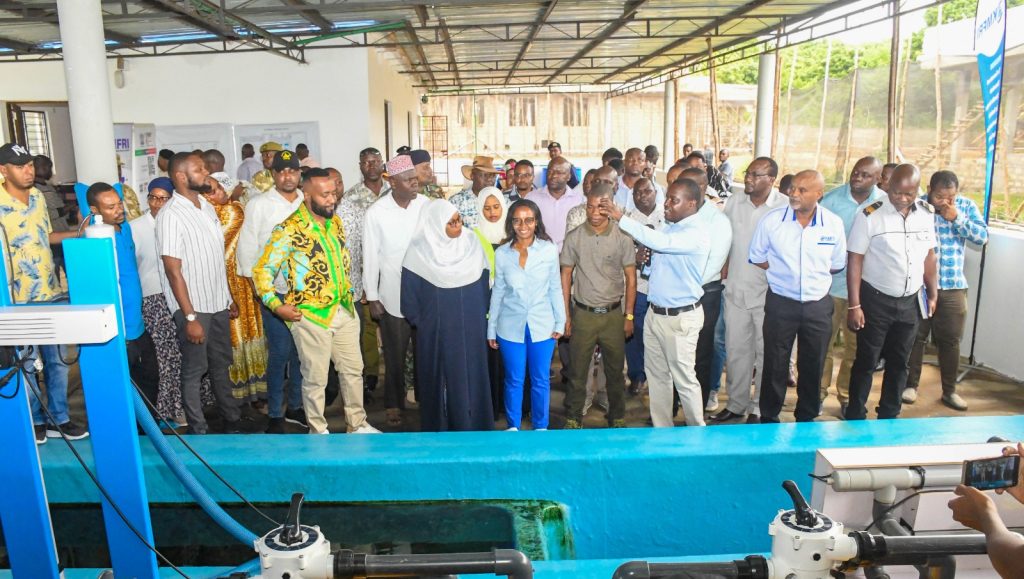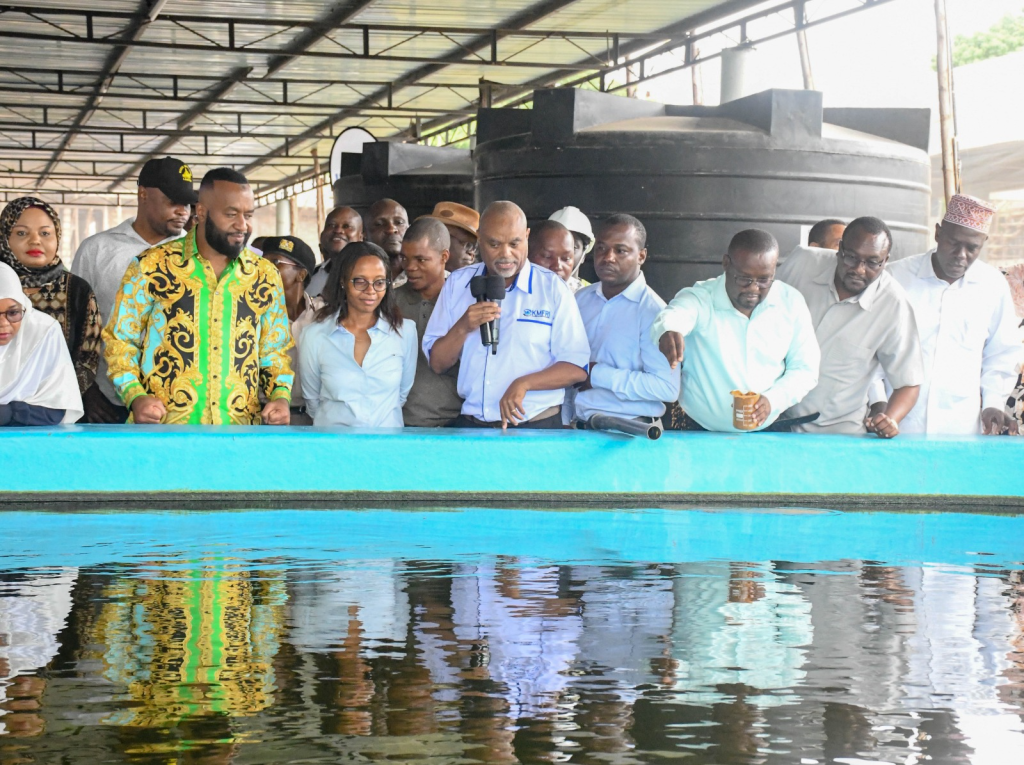
Catalyzing Kenya’s Blue Economy: NRF-Funded National Marine Hatchery Launched in Shimoni
Kenya marked a significant milestone in marine innovation on July 24, 2025, with the official launch of the country’s first National Marine Hatchery in Shimoni, Kwale County. Fully funded by the National Research Fund (NRF) and implemented by the Kenya Marine and Fisheries Research Institute (KMFRI), the facility represents a bold step forward in unlocking the country’s blue economy potential through research-driven, community-focused investment.
The high-profile event drew the participation of key national and county leaders, underscoring strong inter-agency support for the initiative. In attendance were H.E. Hassan Ali Joho, Cabinet Secretary for Mining, Blue Economy and Maritime Affairs; H.E. Hon. Fatuma Achani, Governor of Kwale County; Prof. Dickson Andala, CEO of NRF; Mwanaisha Chidzuga, Deputy Government Spokesperson; and Dr. Tonny Omwansa, CEO of the Kenya National Innovation Agency (KeNIA). Their presence reflected a unified commitment to transforming Kenya’s coastal regions through science, innovation, and sustainable development.
The hatchery, which is now operational, has the capacity to produce up to two million prawn and rabbit fish fingerlings annually, with scaling plans already underway. This development is expected to significantly reduce pressure on wild fish stocks and introduce sustainable, locally sourced alternatives for aquaculture enterprises. It marks a turning point for coastal communities that have long relied on dwindling marine resources for livelihood and sustenance. Already, three local community groups have received fingerlings from the facility — early beneficiaries of a model designed to drive inclusive growth from the ground up.
KMFRI’s Director General described the project as a “game-changer for the local community and a catalyst for national development,” a sentiment that was echoed throughout the day’s speeches. By enhancing fish farming capacity and building a pipeline for high-quality marine fingerlings, the hatchery is set to stimulate job creation, increase household income, and boost food and nutrition security — all while conserving vital marine ecosystems. The project directly addresses urgent national priorities outlined in Kenya’s Vision 2030 and Blue Economy Implementation Framework, positioning research as a powerful tool for economic resilience and transformation.

The launch also highlighted the role of strategic research funding in delivering impact. NRF’s investment in the hatchery reflects its commitment to ensuring that publicly funded research addresses real-world challenges. By supporting institutions like KMFRI to translate marine science into practical, scalable solutions, the Fund continues to demonstrate how science can actively shape policy, improve livelihoods, and foster inclusive economic development.
For communities along Kenya’s coastline, the hatchery is not only a symbol of innovation, but a practical response to structural gaps in the aquaculture value chain. Small-scale fish farmers often lack access to quality fingerlings, technical support, and viable markets — challenges this project is intentionally structured to address. With KMFRI’s technical guidance and long-term engagement, local farmers will be better equipped to grow their aquaculture enterprises and improve production outcomes.
Governor Fatuma Achani lauded the project as a timely investment in the people of Kwale, particularly the youth. She expressed optimism that the hatchery would open new avenues for entrepreneurship and shift perceptions around the ocean — from being seen merely as a natural resource to being embraced as an economic frontier. The hatchery, she noted, is a reminder that when institutions come together to act with intention, communities benefit in very real and lasting ways.
Looking ahead, the National Marine Hatchery is expected to serve as a replicable model for other coastal counties and regional aquaculture programs. Plans are already in place to monitor the survival and growth of distributed fingerlings, offer continuous capacity-building for farmers, and support the development of aquaculture cooperatives. As the program expands, it will create a full ecosystem around sustainable marine farming — one that is grounded in research and sustained by community participation.
The launch of the hatchery affirms NRF’s mission to bridge science and development. It reflects the Fund’s vision of transforming Kenya through targeted research investment that is locally relevant, nationally strategic, and globally competitive. As the country continues to explore the vast potential of its marine and aquatic resources, the Shimoni hatchery stands not only as a national first — but as a lasting investment in Kenya’s future.